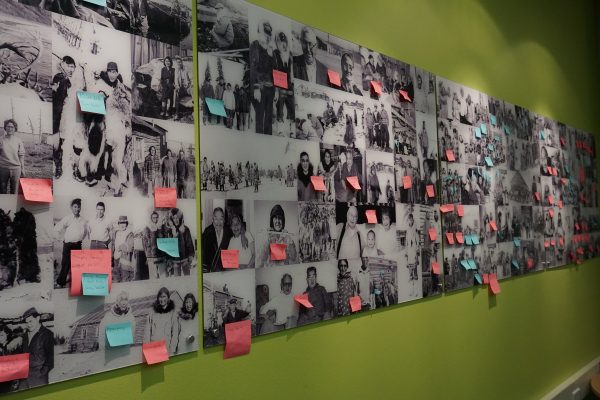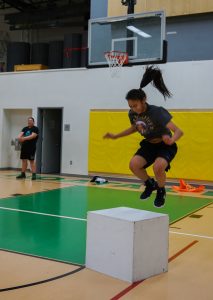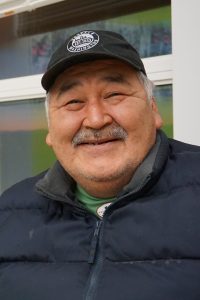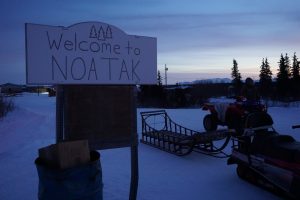
What makes a healthy community? What makes young people in a village thrive? The young people in Noatak have some good ideas.
High School Junior Esther Barger bends her knees and vaults off the bare gym floor onto a two-foot tall wooden box. Her teammates sprint by and run through short obstacle courses. No chatter, no complaining. Just intensive focus.

Esther grimaces as she completes the drills, but she says she likes it. “It’s only fun to me because I get to challenge myself, and I get to improve.”
And she’s not just improving her athletic abilities. Esther says being on the team has helped her overcome her shyness with teammates and everyone else.
“I’m not very social but since we get to know each other, it helps me talk more,” she says. “And it helps outside of the sport, too.”
Noatak stands out as a healthy village. People who live there know it, and so do researchers who study things like resilience.
Community members show up to support the kids and encourage them to do well at school, she says. And not just at basketball games, which are very popular. Elders and adults, like Thurston Boots, are in the school everyday.
Thurston drops off his granddaughter, then just sits in the entry for over an hour, watching and chatting. Every morning.
“Oh, I like to be around the kids, too,” he explains. “You know, we got lots of kids out here, and I just make sure they have good discipline for the teachers.”
Thurston says discipline, respect, and sharing are key values in the village. Dozens of people repeated the same sentiment — it’s the kind of place where if someone has extra food from dinner or a hunt to share, they announce it over the VHF radio.
Thurston says his elders taught him those values, so he teaches the young people.

“Everybody works together, and when somebody needs something we pass it on,” he says. “Everybody here in this community, there are just like one big family. They all share everything every. As we learned from our grandfather and grandmother (that’s who) shows us how to do it.”
On the surface it seems like these things are just typical parts of a pleasant community. Kids are involved with sports. Adults play active roles in their lives.
But really — it’s these little things that matter. Researchers say that its these connections that create a safe and supportive environment that allows young people to take risks and mature in healthy ways. They learn their strengths, understand their roles in the community, and figure out who they are.
Noatak is not perfect. Brianna Kirk will tell you that. She grew up in the village, left for college, then recently came back to work as the school counselor. She says she can tell which kids come from families that participate in village life and in subsistence activities, and which kids don’t.
“We do lack a lot of things,” she says. “Like I deal with kids that sometimes have home issues that they bring into the school, and it affects their ability to perform in the classroom. It affects their friendships. There’s so many stresses and things that affect students and all the way from kindergarten to high school.”
Brianna was in middle school when about 10 years ago, a community member died by suicide. She says she still remembers how that felt, and it shapes her work today.
That means helping everyone know what signs to look for, how to jump in when someone is struggling, and how to keep kids engaged.

“It’s taught us a lot about how much one life being taken from us can affect everybody, I think,” she says. “With someone like myself and the other staff in the school that were here when it happened, we always have it at the back of our head. And we want to keep our students safe as much as possible.”
For Esther, from the basketball team, engagement goes well beyond the court. Every year she goes fishing and caribou hunting with her family. But her favorite thing to do is berry picking.
“I like to race my mom because she’s been berry picking a lot more than me. So I’m very competitive,” she says, laughing.
They fill their freezers and build their relationships all at the same time.
Noatak is not the only community in Alaska that successfully supports their young people and families. Over the next few weeks on the Solutions Desk, we’ll be exploring different ways individuals and communities are becoming more resilient. Follow along by subscribing to the podcast on iTunes, Stitcher, Google Play, or NPR.
